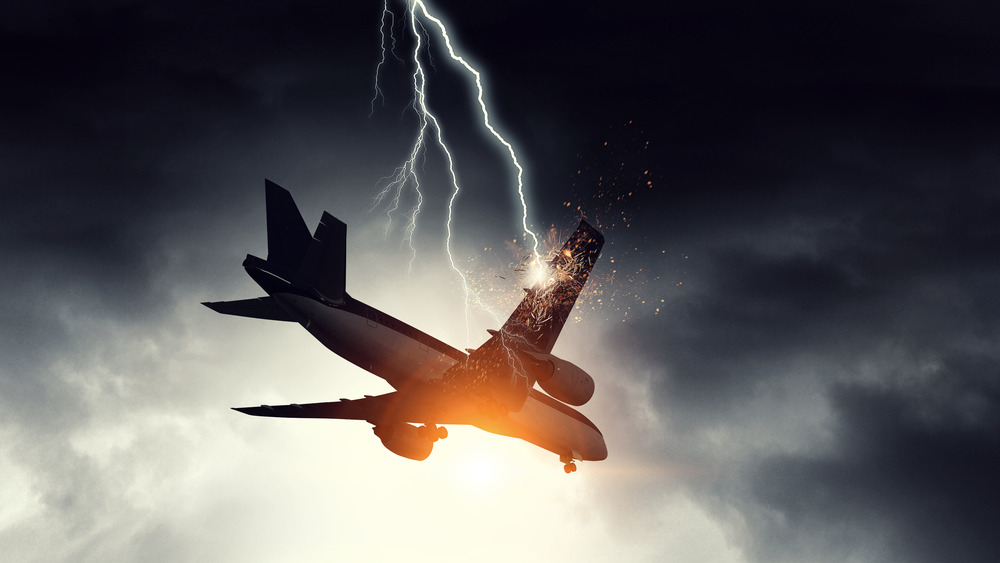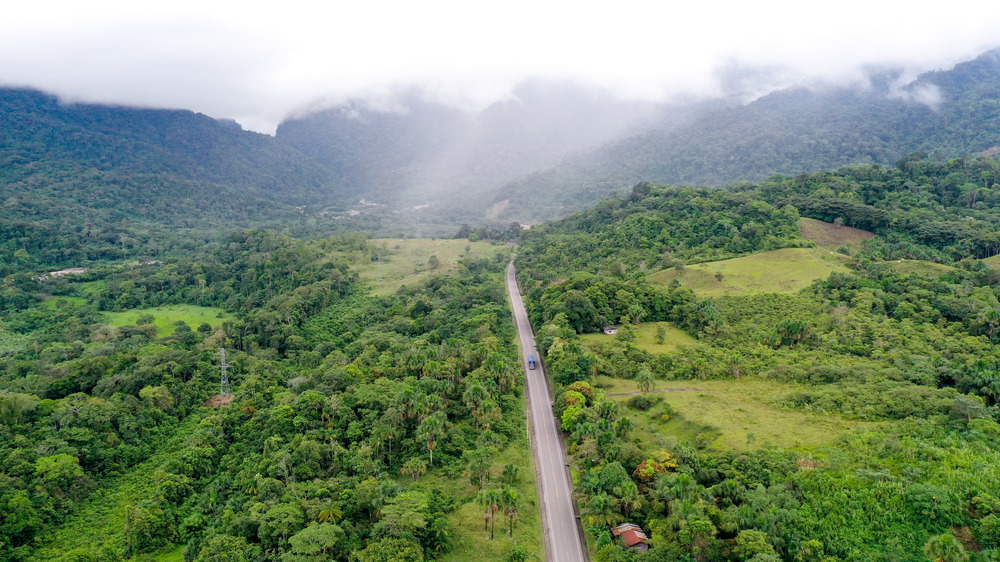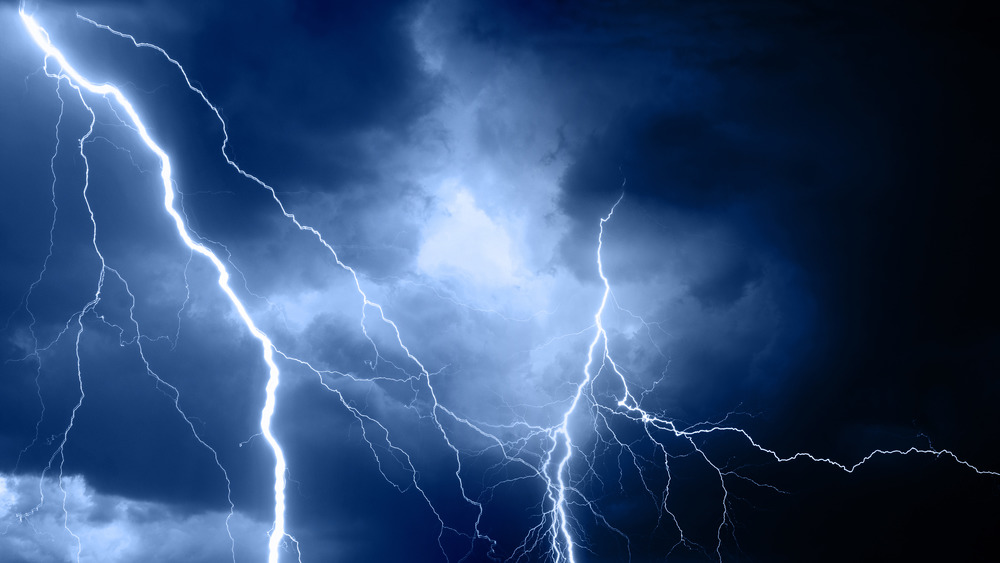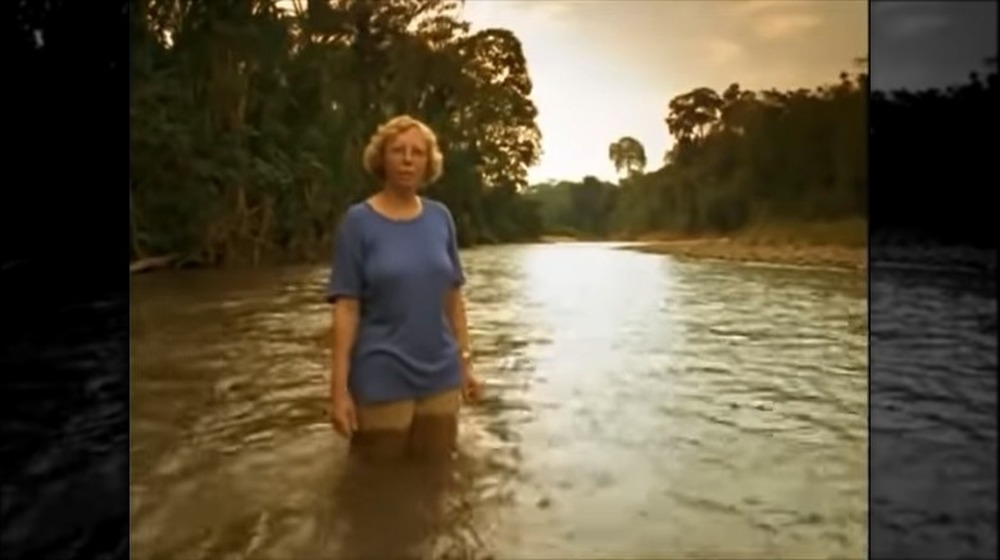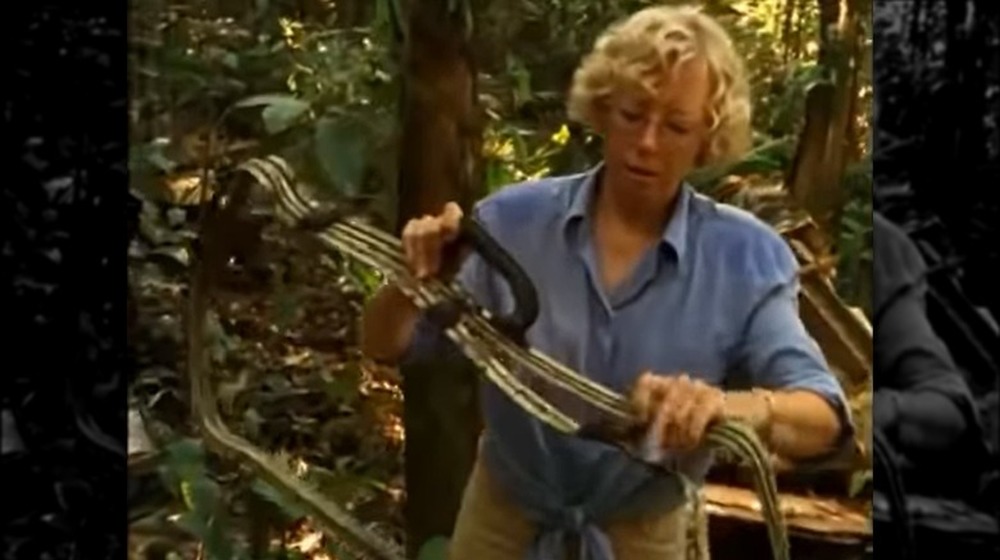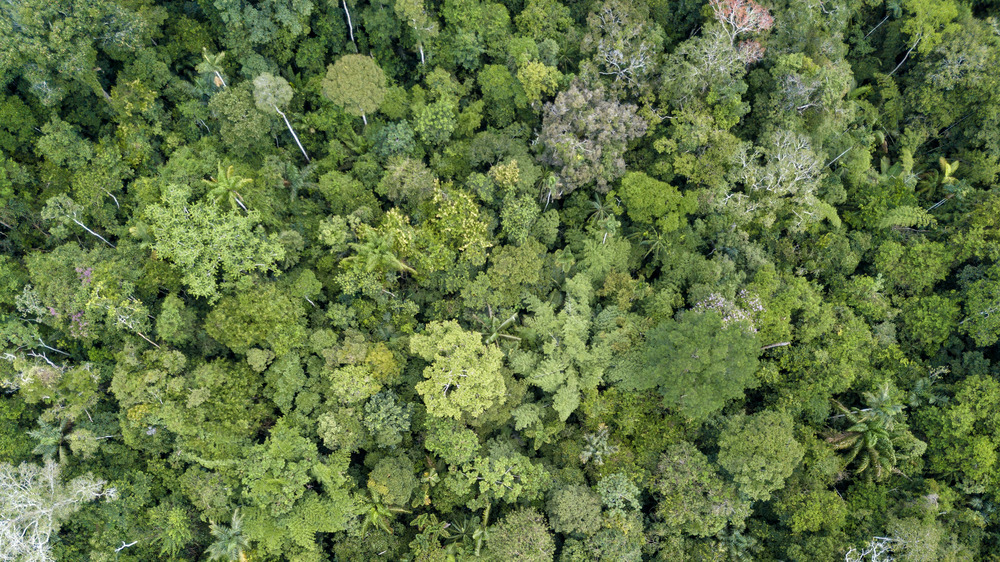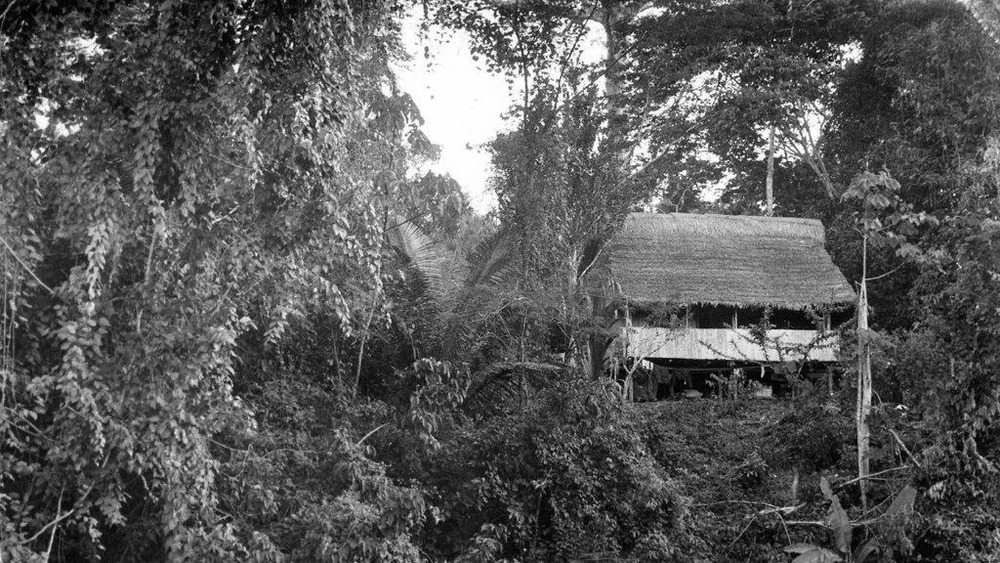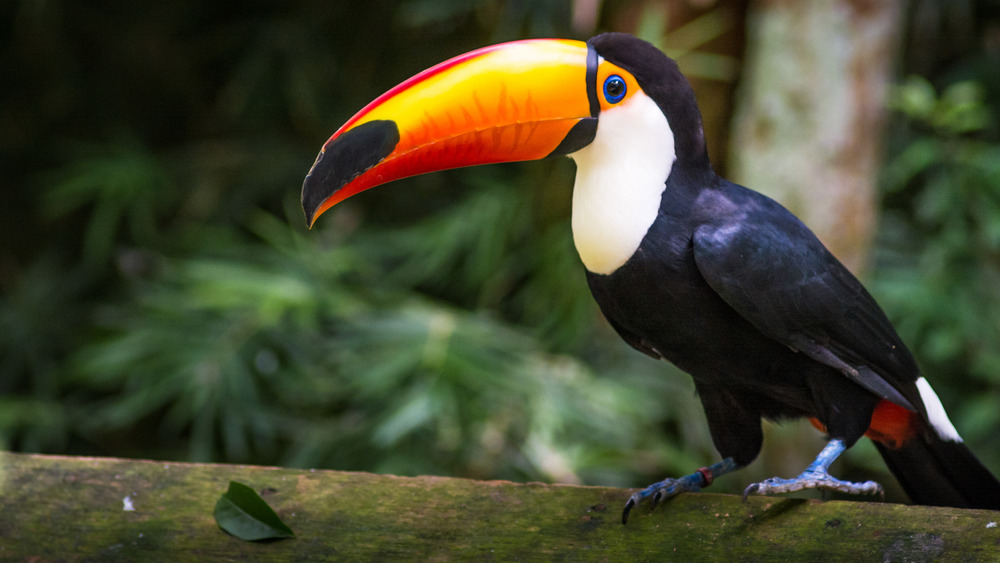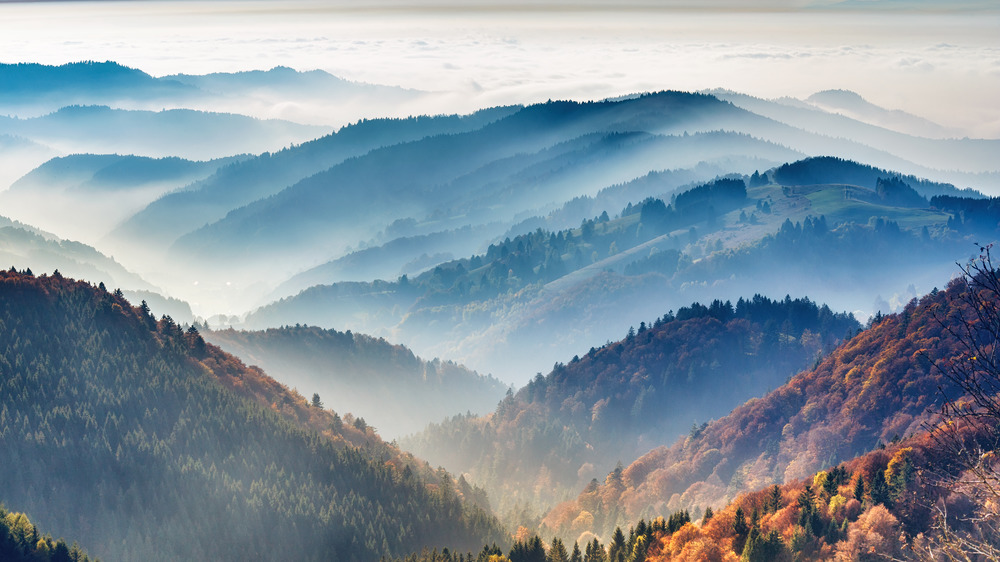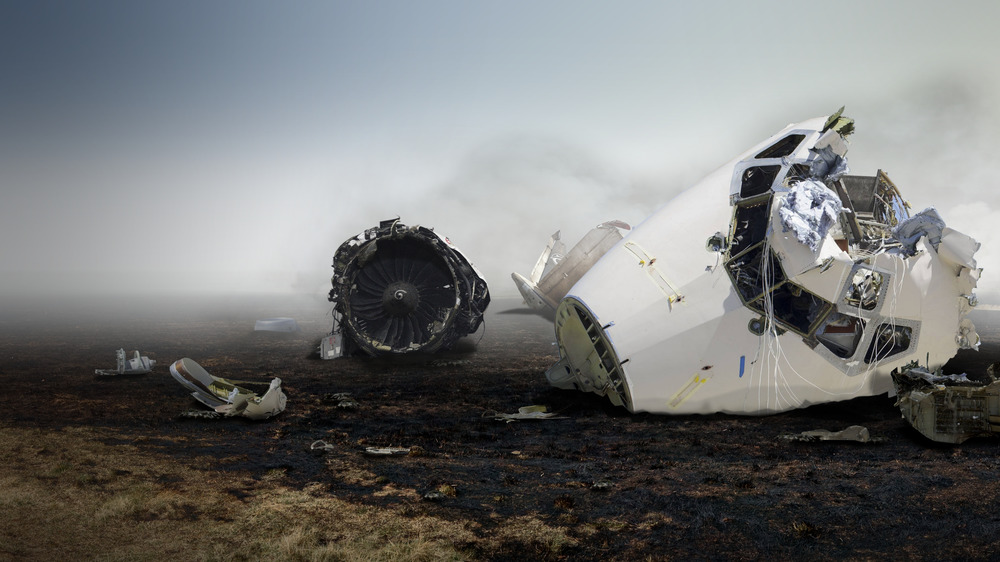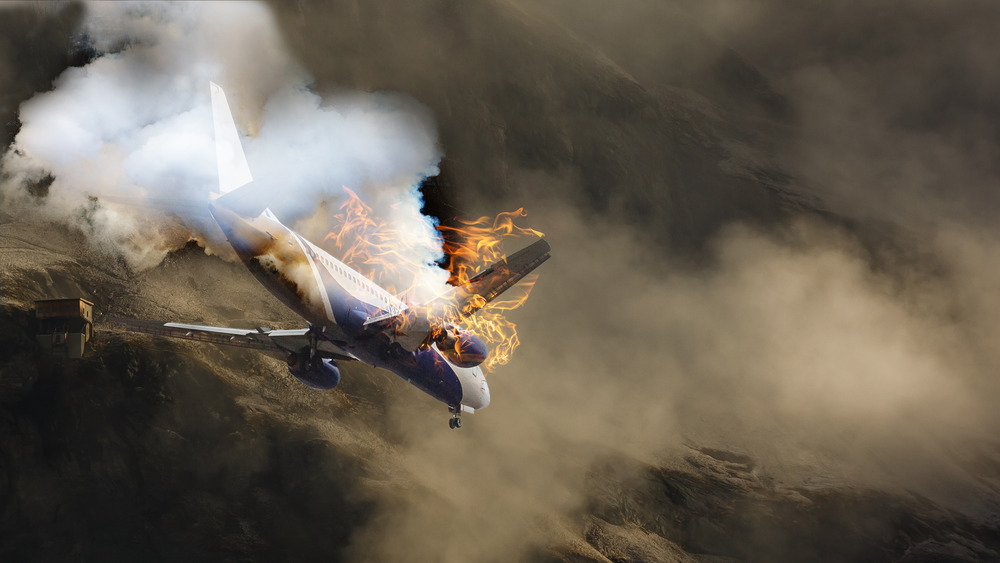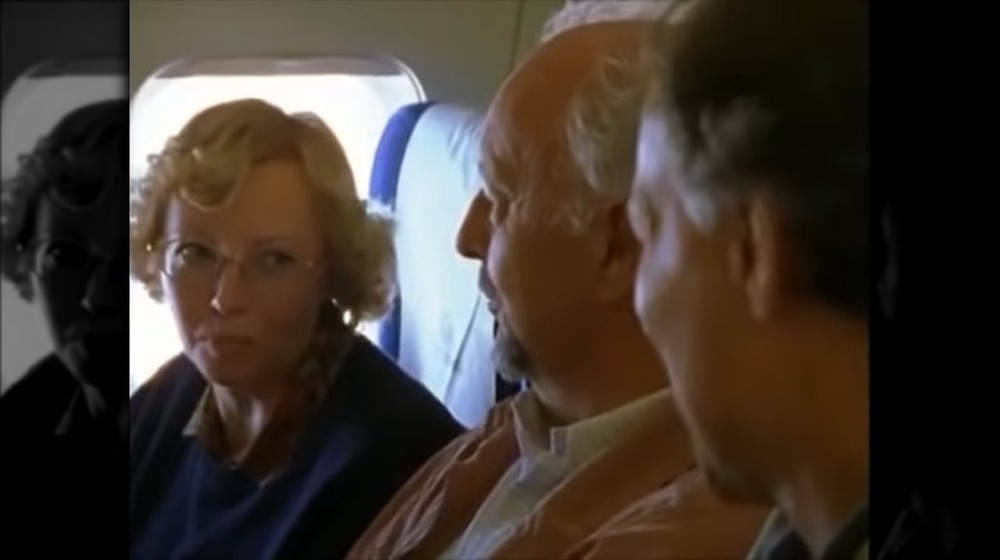How A Teen Plummeted 2 Miles Out Of An Airplane And Survived
Peoples' opinions on flying can differ a lot. Some people love it, some don't mind, and others could completely do without it. But with the occasional plane crash or accident that hits the news, sometimes a particularly violent bump of turbulence can make anyone wonder what would happen if they were about to become a sad statistic, a victim killed in a relatively rare accident.
If a plane were to break apart in midair and send people into a free-fall miles above the earth, it's easy to guess that no one would survive. Even if someone did survive the fall, what if that accident happened over a rainforest inhabited mostly by wild animals and exotic bugs but very few people? Then it seems like a certainty that no one would make it back to civilization and live to tell the tale.
But it's not impossible. Actually, it's even happened before, and it's the real-life story of a woman named Juliane Koepcke.
Flight 508 began as normally as anyone might expect
It was Christmas Eve in 1971 at the Lima-Jorge Chavez International Airport in Lima, Peru. Seventeen-year-old Juliane Koepcke boarded the plane with her mother. According to a later interview with Vice, they were on their way to spend Christmas with her father in the Amazon rainforest.
Koepcke was in generally high spirits, having just graduated high school some hours before. As a plus, she thought this particular plane looked perfect and was pretty fond of flying in general. In her book, When I Fell From the Sky, Koepcke mentions that she'd been on a class trip to Arequipa, Peru, just a few weeks earlier, and that she'd found that flight to be wonderful. Even on the return trip to Lima, where the plane had hit some turbulence and begun rocking in the air, she'd been completely fine with the situation.
So even though Flight 508 was delayed by seven hours, leaving everyone in a rush, when the plane flew into a dark cloud, Koepcke didn't think much of it, as she said in an interview with BBC years later. At the time, she didn't realize anything was wrong, even though her mother, a respected ornithologist with a general mistrust of airplanes, seemed to think otherwise.
But then, things began to go very wrong
Speaking to Vice and BBC, Juliane Koepcke could recall when things began to change. After an uneventful 30 minutes, the turbulence hit, and then she started to realize something wasn't the way it should be. This wasn't normal turbulence. The plane rocked violently, sending luggage and Christmas gifts flying around the cabin as passengers screamed and cried. Koepcke and her mother just held hands in silence.
After another ten minutes, a bright light flashed outside the window as a bolt of lightning hit the right wing, breaking it off the plane. Koepcke heard her mother say, "Now it's over," and the plane fell into a steep nose dive. People screamed, the motor roared, and everything was incredibly loud.
Then Koepcke was in free fall, 2 miles above the green top of the Amazon rainforest and still attached to her seat, though her mother and the other man in the row had been pulled out of theirs. She barely had time to register feeling scared, just feeling the seatbelt pushing against her stomach and knowing she was upside down, all while the world sounded calm and quiet compared to the cacophony inside the plane. All she could hear was the wind in her ears before blacking out, entirely alone as the jungle canopy spun toward her.
Juliane Koepcke survived the crash but was forced to survive the rainforest
Juliane Koepcke woke the next morning around 9 a.m., realizing that she was on the ground, having survived a plane crash with relatively minor injuries — a bad concussion and some deep gashes among them — as she explained to Vice and BBC.
She searched for her mother for a full day before finding a small creek and walking in it, knowing that it was a safe way to eventually find help. She could hear the rescue planes above, though that eventually stopped. She couldn't draw their attention, and she knew they'd stopped looking.
For ten days, she survived alone in the rainforest, subsisting on a bag of sweets she found at the crash site and concerned about a maggot-infested cut on her arm. By that tenth day, she felt weak and let herself float along a river, eventually finding a boat. At first, it seemed like a hallucination, but touching it proved it was very real. A small path led her to a hut where she cleaned out her wound with gasoline and spent the night.
The next morning, she could hear voices outside. To her, they sounded like angels. The men were shocked at her presence, thinking she was some kind of water goddess. But after she explained the situation, they fed her and tended to her wounds, taking her back to civilization the next day. A day after her rescue, she was reunited with her father.
Juliane Koepcke was the only person to survive Flight 508
While on her own in the rainforest, Juliane Koepcke told BBC that she came upon other victims of the crash. On the fourth day, she could hear vultures landing nearby, knowing that they had to be swarming the bodies of other victims from the crash. Still following the river at the time, she ended up finding a row of seats with their passengers still attached, rammed headfirst into the ground.
She'd never seen a dead body before that. Realizing that her mother wasn't among those bodies brought her relief, but then that relief brought shame just a little later.
Ultimately, on January 12, they did find her mother's body, learning that she had actually survived the crash. But, unlike Koepcke, her injuries were far worse, keeping her from moving and seeking help, and she died after a few days.
Every other passenger on that flight suffered a similar fate, either dying in the crash or losing their life to the rainforest, making the crash one of the most devastating in Peru's history. According to Aviation Safety Network, the plane itself was considered damaged beyond repair, and 91 of the 92 occupants died. Eighty-five of them were passengers. At the time, it was the second worst accident for a plane of its type, while being the third worst across Peru in general.
Juliane Koepcke has theories as to how she survived the fall
As the child of two scientists, Juliane Koepcke doesn't consider herself a particularly spiritual person, and she's since thought about how she was able to survive a 2-mile-long free fall. Speaking to CNN, she mentioned that the foliage of the rainforest was especially thick in the area she landed. It could've cushioned her fall and reduced the impact, like falling onto a mattress instead of concrete.
The seat itself might have also made a difference. She was still attached to the entire row as she fell, and it was spinning like the blades of a helicopter, which could've helped to slow her fall. Or she might've been attached to one end of that row of seats and "swirled down" to the ground more slowly than if she'd fallen in a straight line (via Business Insider).
Then there's also the storm to think about. The storm caused the lightning that hit the wing, but it also might have made heavy winds that blew upward from the ground, which also could have helped to slow down her fall.
Really, though, Koepcke thinks that the actual reason for her survival is a combination of all of these theories.
Juliane Koepcke's survival in the rainforest can be attributed to her father
Surviving the plane crash is one thing, but surviving for ten days in the rainforest is another. It was actually her father's advice that helped keep Juliane Koepcke alive. He'd been the one to tell her that the safest way to getting help was via rivers (via CNN), and she knew to wash out her wound with gasoline because she'd seen her father do the same to the family dog, according to BBC.
In her book, Koepcke described her father, Hans-Wilhelm Koepcke, as an ambitious biologist who wanted to study areas with high biodiversity, like South America. Over the course of his life, he contributed to the understanding of life in the rainforest, as told in his obituary. Among other things, he essentially wrote the literal book on animal life in the rainforest. Titled The Basis for a Universally Valid Biological Theory, the work spans two volumes and over 1,600 pages, covering an incredible number of topics, such as sexuality, adaptation, and much more.
Koepcke's father also had a pretty wild story about getting to South America. He'd secured a job, but passage wasn't easy to find for a German scientist in the late 1940s. At one point, he walked and hitchhiked through the Alps. Later, in Italy, he was arrested and held in a prison camp for months. He prayed for the walls of the camp to collapse, and one night, during a storm, a wall next to him literally did, letting him escape.
Juliane Koepcke's mother was no slouch either
Really, the success that Juliane Koepcke's father found wouldn't have come without his wife, Maria. A headstrong woman whom Juliane Koepcke remembers in her book, Maria Koepcke was a biologist — specifically an ornithologist, since she studied birds — who received a doctorate in Germany, something which was basically unheard of at the time for an unmarried young woman. Suffice to say, Maria's family wasn't especially pleased when she insisted on making the move to South America on her own, following her fiancee and her passions.
Once in South America, she would constantly rescue injured birds, nursing them back to health with the help of her daughter, studying their behaviors, and raising the chicks that hatched under her care. Not a single chick died under her watchful eye.
Over time, Maria became Peru's leading ornithologist, publishing many works on the bird species residing in South America, alongside her husband, as mentioned in his obituary. A particular set of leaflets gave in-depth descriptions and information on nearly 150 species of birds, complete with observations on size, voice, and other characteristics, as well as drawings of the birds themselves and their habitats.
Juliane Koepcke's upbringing was surrounded by nature
Given the careers of her parents, it's not surprising that Juliane Koepcke admits to being far from a city kid in her book. She grew up surrounded by birds that her mother would save, helping her nurse them back to health or feeding the chicks they were raising, many of which had fun names that Koepcke came up with herself. Eventually, she even managed to raise a group of fig parrots on her own, pre-chewing bananas to feed them.
That exposure to nature didn't just come from home, though. Her parents began taking her on their research expeditions while she was still a young girl, traveling to remote areas of the mountains to look for new bird species. They would climb the mountains on foot, then camp for another week in the forest. It didn't matter that she was still young. She loved the trips and found herself fascinated by nature while her parents worked.
All together, Koepcke grew up to be especially adaptable and the furthest thing from squeamish. She thought the feeling of tiny crabs on her feet was strange but exciting, was thrilled to share a ship with huge spiders and snakes during a trip to Germany, and didn't even mind when her parents bought a shark at the market and found a human hand in its stomach. Her mother noticed her enthusiasm, writing to a friend that she had already started collecting a herbarium at only 5 years old.
Maybe the tragedy could've been avoided if the airline was safer
When it comes to Flight 508, Juliane Koepcke admitted in an interview with CNN that they booked the flight despite the airline's less-than-spectacular reputation. Líneas Aéreas Nacionales S. A. — shortened to LANSA — was the airline for Flight 508, and they had recently lost two other planes in their own tragic accidents.
The earlier of the two crashes was Flight 501, which took off from Lima on April 27, 1966, and was meant to land in Cuzco, Peru. According to the Aviation Safety Network, it was seen flying at strangely low altitudes before crashing into the side of Mount Talaula. All 49 occupants died in the crash, and the plane was deemed damaged beyond repair, making it the second worst airline accident in all of Peru at the time (though it's dropped down the rankings since then).
The exact reason for this crash isn't exactly known, but investigators concluded it was probably pilot error. The pilot had flown the route over a hundred times but hadn't actually been rostered for the flight, and the lack of rest might have led to poor judgment of the height of the mountain range. Or the pilot might have miscalculated how high the plane could climb with the weight it was carrying, meaning it could only get through the area by flying through the mountains rather than over them, which is just not a good idea.
The other crash was considered Peru's worst airplane crash at the time
It's not a title anyone should want to claim, but LANSA did, for a time, hold the top spot for worst airplane crash with the accident of Flight 502. According to the Aviation Safety Network, the Lockheed Electra (the same plane as that of Flight 508) took off on Aug. 9, 1970, leaving Cuzco to arrive in Lima.
Problems were abound from the start. The flight was delayed by six hours, then the plane took an extra 700 meters (nearly 3,000 feet) to take off compared to the usual procedures. Upon takeoff, an engine failed as the plane was climbing. Flight 502 then crashed after a left turn made 300 feet in the air. Ninety-nine of the 100 occupants died, as well as two farmers who were killed on the ground.
Initial investigations concluded that the crash was probably caused by improper loading procedures and a lack of maintenance overall, but then further research found evidence of a coverup. LANSA employees had apparently attempted to falsify records as the investigation was ongoing. Unsurprisingly, LANSA and some of its employees were fined, while the airline lost its operating license for 90 days.
With such a spotty record when it comes to safety, it's not much of a shock that LANSA completely lost its operating permit a few weeks after the crash of Flight 508. Even worse, the plane carrying Flight 508 was actually the last aircraft LANSA had.
The aftermath of Flight 508
Immediately after Juliane Koepcke's rescue, she was hounded by the media, as she told CNN, receiving letters from hundreds of people she had never met before. According to her book, for a while, she didn't exactly want all that media attention, shying away from it. Eventually, she did return to school in Lima in 1972, but with journalists still following her every step, her father sent her back to Germany (via Disciples of Flight). There, she went on to follow in her parents footsteps, studying biology at the University of Kiel, then getting a doctorate from Ludwig-Maximilian University, before returning to Peru to run her own research. She later married and settled down, working as a librarian in Munich.
Eventually, though, she did begin allowing her story to be told, and Werner Herzog contacted her about filming a documentary centered around her experiences. That documentary, Wings of Hope, came out in 2000, and the filming allowed her to return to the crash site and work through the trauma, all while Herzog lended an empathetic ear.
But that wasn't all that happened during the filming. Rather, Herzog also convinced her to preserve her parents' legacy. At first, that meant expanding their Peruvian rainforest research area by nearly three times, up to almost 1,800 acres. By 2011, she saw to it that the area was turned into a nature reserve, permanently protected from human interference.
